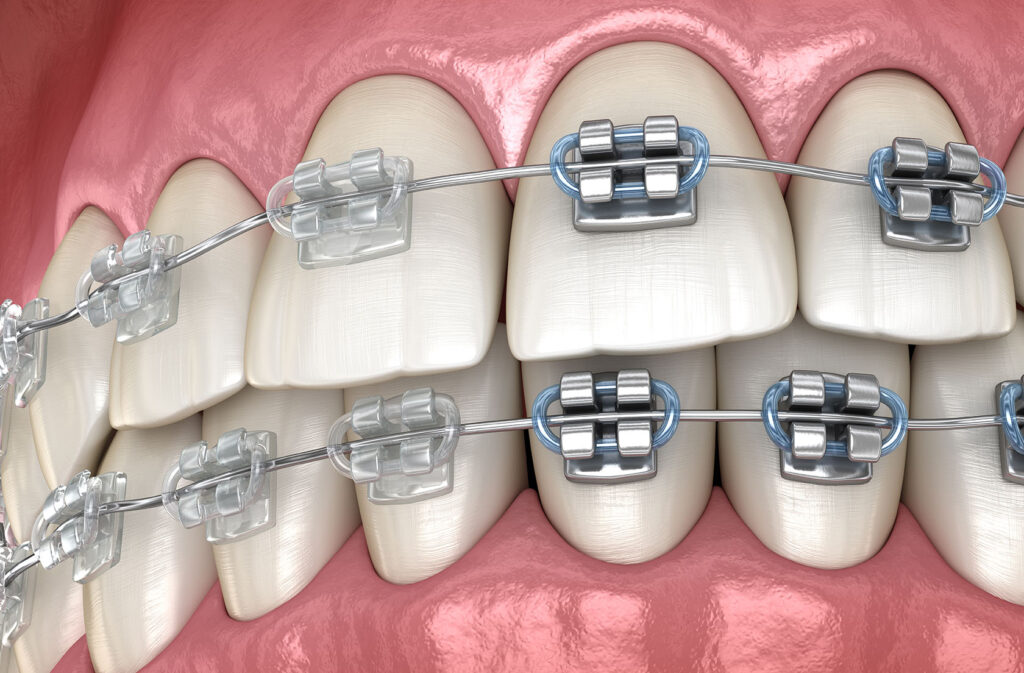Types of Braces
We specialize in providing advanced orthodontic care through a comprehensive range of braces options tailored to meet each patient’s unique needs. Our experienced orthodontic team combines cutting-edge technology with proven treatment methods to deliver exceptional results for patients of all ages. We understand that choosing the right type of orthodontic appliance is a significant decision that impacts both your oral health and confidence, which is why we offer detailed consultations to help you select the most appropriate treatment option.
Our orthodontic practice has successfully transformed thousands of smiles using traditional metal braces, ceramic braces, and clear aligner systems. We believe that every patient deserves personalized care that addresses their specific orthodontic concerns while considering their lifestyle, budget, and aesthetic preferences. Our commitment to excellence ensures that you receive the highest quality treatment in a comfortable, welcoming environment where your questions are answered and your concerns are addressed with patience and expertise.

Traditional Metal Braces
Traditional Metal Braces consist of metal brackets bonded to the front of each tooth, connected by a metal archwire that is secured with small elastic bands or metal ties. These are the most common and recognizable type of orthodontic treatment, featuring stainless steel components that are highly durable and effective at correcting even complex alignment issues. While they are the most visible option, traditional metal braces can treat a wide range of orthodontic problems, from simple crowding to severe bite issues. The elastic bands can be customized with different colors, making them particularly popular among younger patients who want to personalize their treatment.
Clear (Ceramic) Braces
Clear (Ceramic) Braces function identically to traditional metal braces but use tooth-colored or clear ceramic brackets instead of metal ones. The brackets are designed to blend in with the natural color of teeth, though the archwire is still metal. While they offer a more aesthetic option for patients concerned about the appearance of braces, ceramic brackets are typically larger than metal ones, and are more prone to staining from certain foods and drinks. They may also be more fragile than metal brackets and can cause more wear on opposing teeth.
Clear Aligners
Clear Aligners are a series of custom-made, removable plastic trays that gradually shift teeth into proper alignment without the use of brackets or wires. Each set of aligners is worn for one week before progressing to the next set in the series, with the number of aligners depending on the complexity of the case. The primary advantages include their near-invisibility, removability for eating and cleaning, and the absence of dietary restrictions or difficulty with oral hygiene. However, clear aligners require strict compliance with wearing them 22 hours per day, and may not be suitable for complex orthodontic cases.
FAQs on Types of Braces
What can I expect at my consultation?
Your first visit to our orthodontic practice begins with a comprehensive examination where we assess your teeth, jaw alignment, and overall oral health. We take detailed digital photographs, X-rays, and impressions to create a complete picture of your current orthodontic needs. During this thorough evaluation, we discuss your specific concerns, treatment goals, and any questions you may have about the different types of braces available. We believe in educating our patients about their options so you can make an informed decision about your orthodontic care.
Following your examination, we present a detailed treatment plan that outlines the recommended type of braces, estimated treatment duration, and associated costs. We take time to explain the advantages and considerations of each braces option, whether traditional metal braces, ceramic braces, lingual braces, or clear aligners would be most suitable for your case. Our team provides transparent information about insurance coverage, payment options, and financing plans to make your orthodontic treatment accessible and affordable. We encourage questions and ensure you feel completely comfortable with your treatment plan before moving forward.
What can I expect during treatment?
The placement of your braces is performed in our comfortable treatment room using precise techniques that minimize discomfort and ensure optimal results. For traditional metal braces and ceramic braces, we carefully bond brackets to each tooth and connect them with specialized wires that gradually guide your teeth into proper alignment. The entire placement process typically takes one to two hours, during which our team explains each step and ensures your comfort throughout the procedure. We use the latest bonding materials and techniques to secure your braces properly while protecting your tooth enamel.
Throughout your active treatment period, you will visit our practice regularly for adjustments and progress monitoring. These appointments typically occur every four to eight weeks, depending on your specific treatment plan and the type of braces you choose. During adjustment visits, we modify wire tensions, replace elastic bands if applicable, and make any necessary modifications to ensure your treatment progresses according to schedule. Our team carefully monitors your progress at each visit and addresses any concerns you may have about comfort, oral hygiene, or treatment expectations. We maintain detailed records of your progress and provide you with updates on how your treatment is advancing toward your desired results.
How is the recovery and aftercare?
The initial adjustment period after getting braces typically lasts one to two weeks as your mouth adapts to the new appliances. During this time, you may experience mild soreness in your teeth and gums, which is completely normal and indicates that your teeth are beginning to move into their correct positions. We recommend eating soft foods for the first few days and using over-the-counter pain relievers as needed to manage any discomfort. Your tongue and inner cheeks may feel slightly irritated as they adjust to the presence of brackets and wires, but this sensation diminishes quickly as your mouth adapts to the braces.
Maintaining excellent oral hygiene becomes even more important once your braces are placed, and we provide comprehensive instructions on proper brushing and flossing techniques. We recommend using specialized orthodontic toothbrushes, interdental cleaners, and fluoride rinses to keep your teeth and gums healthy throughout treatment. Regular dental cleanings every three to four months help prevent plaque buildup around brackets and maintain optimal oral health during your orthodontic treatment.
As your treatment progresses, you will notice gradual improvements in your tooth alignment and bite function. Most patients adapt completely to their braces within the first month and report that the appliances become a natural part of their daily routine. We provide ongoing support throughout your treatment, addressing any concerns promptly and ensuring that you feel confident in caring for your braces. Our team is always available to answer questions about diet restrictions, oral hygiene techniques, or any issues that may arise during your orthodontic treatment, ensuring that your experience is as comfortable and successful as possible.
